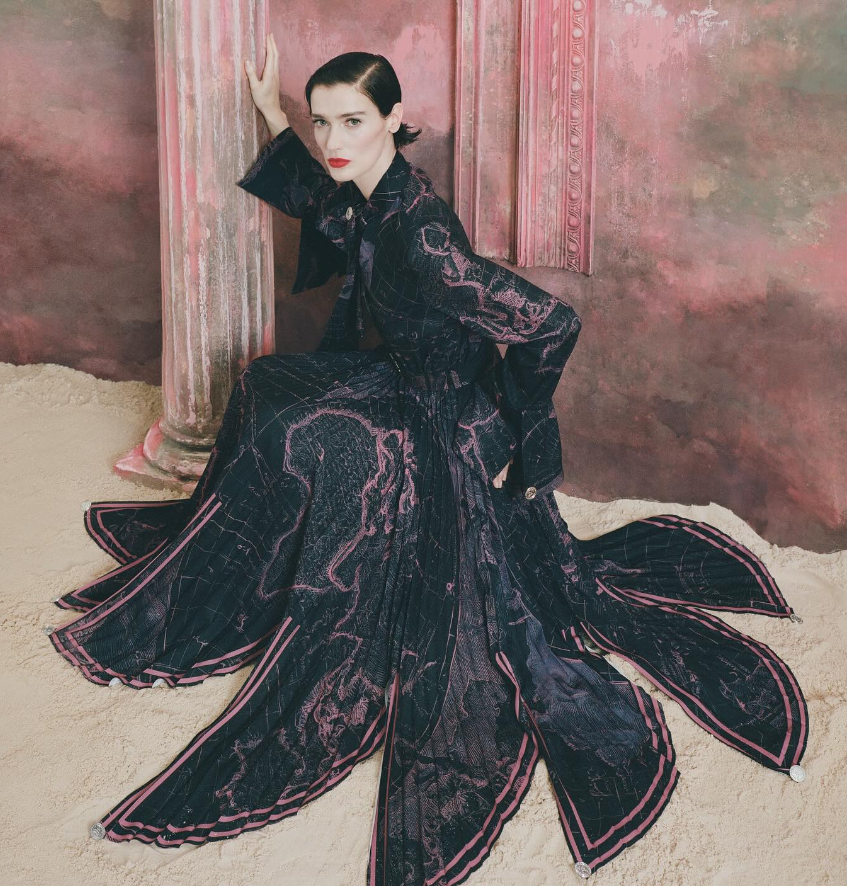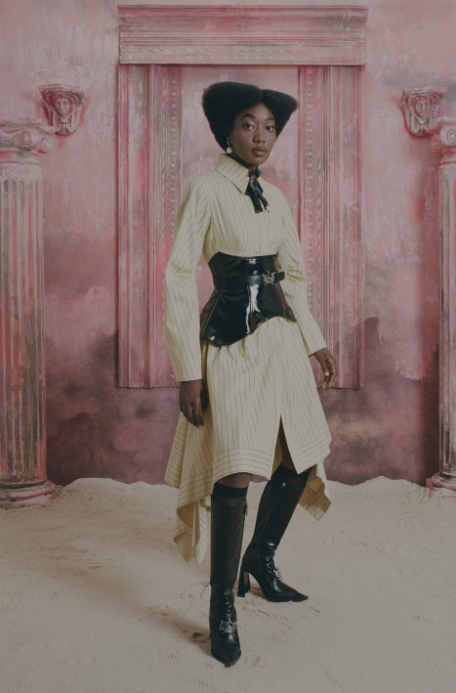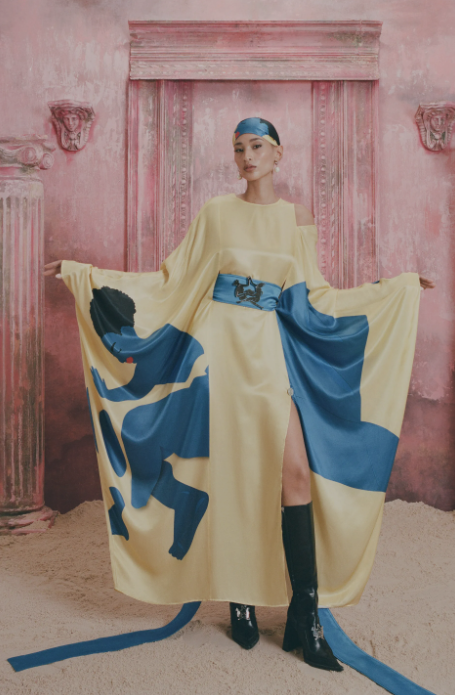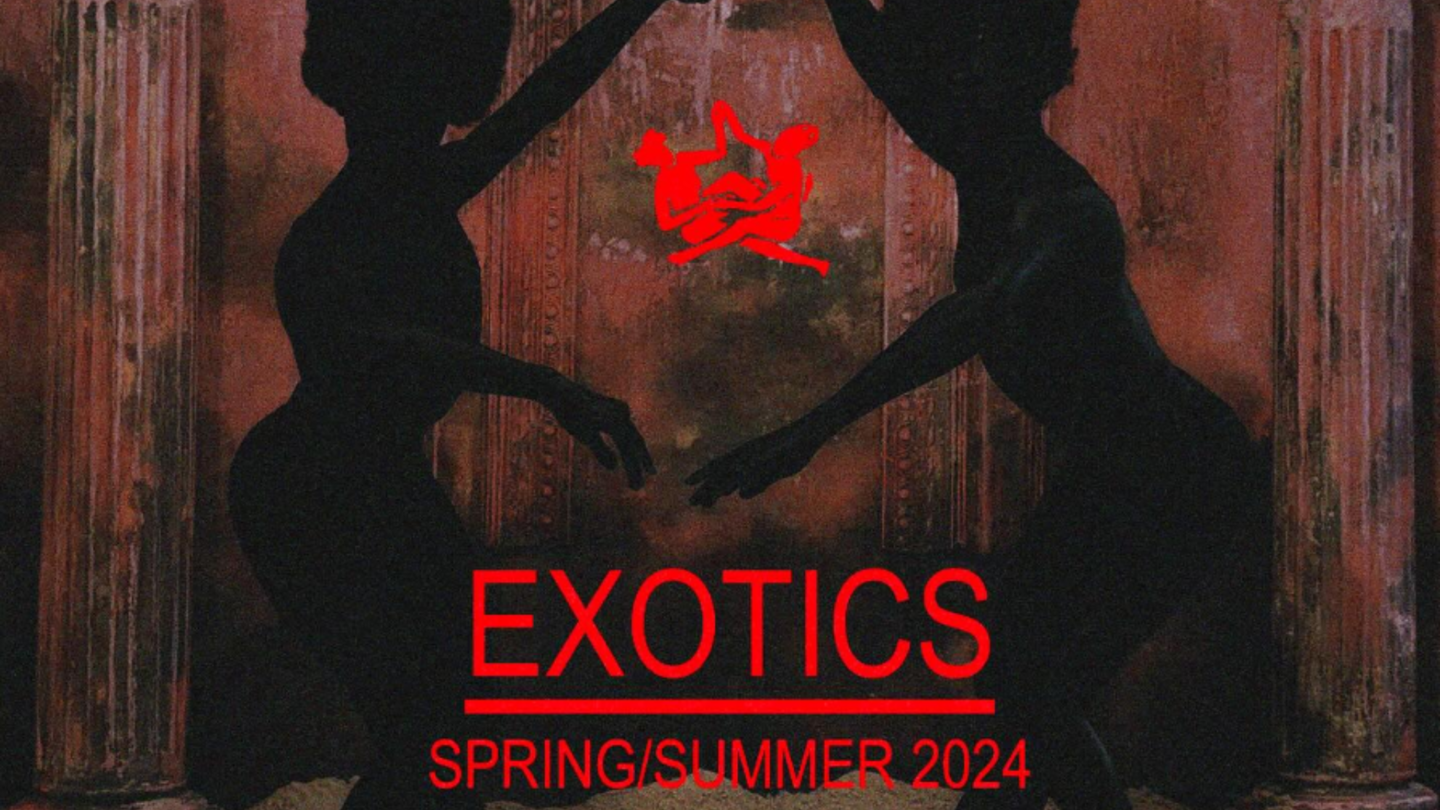From his earlier collections which include the Home Economics Collection AW 2018 to the Discard Theory SS23 Collection, in every passing season, Thebe Magugu presents an enchanting assortment of styles and designs are that not only visually appealing but also seem to resurrect narratives lost in obscurity. In every passing season, it becomes increasingly evident that Magugu’s unique collections are not just fashion pieces; they are compelling narratives deeply interwoven with Africa’s rich history.
Magugu’s forthcoming SS24 Collection, aptly named Exotics, maintains this tradition by drawing inspiration from the remarkable story of Saarah Baartman – one of the first women known to be subjugated to human sexual trafficking. Her rather large posterior later inspired the Victorian bustle dress during the 1870s and again in the 1880s.
“For those unfamiliar with the story of Sarah Baartman (Saartjie Baartman), she was a girl taken from her indigenous village in the Eastern Cape (South Africa) by two white British men in 1810, who took her to London and exploited her to the very end of her life. This season, I wanted to speak towards this tragedy, lest it gets lost in history’s footnotes – which usually confuses victory with tragedy and erases the ‘exotic’ body”, says Thebe Magugu of his SS/24 collection.

The first item from this fashion ensemble that caught my eye is a remarkable design showcasing delicate pink patterns, weaving together the contours of a map connecting Africa and Britain, underpinning the journey undertaken by Sarah Baartman on her path to enslavement in Britain. This symbolic map is artfully juxtaposed against a sleek black crepe blouse and a gracefully flowing, seemingly pleated, long black skirt.
Nestled along the hemline of the pleated skirt, borders played host to a shimmering coin secured at each apex, a reminder of Baartman’s unsettling history of being exhibited for profit on the bustling streets of London.
Magugu’s thought-provoking design choices intriguingly incorporate a Victorian fashion influence into this collection. You cannot help but acknowledge the unmistakable imprint of the Victorian era on this collection, a period that had previously exploited Baartman. This influence is palpable throughout, particularly in the high necklines and slim, elevated-collar shirts. These elements harken back to the traditional modes of dressing, offering a glimpse into the surrounding attire of Sarah’s era in Britain and the prevailing fashion of the time.

However, Magugu’s approach goes beyond mere homage. To ensure the preservation of Sarah’s native heritage, vibrant colour palettes are introduced to these conventional, even conservative, outfits and silhouettes. This infusion of vivid hues inflicts new life into these garments, reflecting the vibrancy of our colourful, contemporary culture while retaining an important connection to the past.
For me, the standout pieces of this collection featured a gentle light-yellow pinstripe dress embellished with a graceful black ribbon and a captivating black crystal, seamlessly replacing the traditional cameo at the neckline. This piece was paired with a luxuriously wide patent leather corset, adding a modern twist to the vintage charm – underpinning efforts by Magugu to design a collection with a lifespan that extends its runway appeal.
If you look closely into the collection, you will notice a series of silk-textured, floor-length dresses, which feature an artistic portrayal/illustration of Sarah Baartman herself. The illustration was crafted by Johannesburg-based illustrator, Phathu Membwilwi. The illustration of Baartman is sort of broken into segments and is scattered across the canvas of the dress.
During a recent Zoom interview with Vogue, Magugu said “When Phathu sent me the artwork, I sort of broke it apart on Illustrator, So you’ll see her thigh in one place, or her feet or her body in another place. And I think symbolically it speaks to that sort of fragmentation of being dropped into a completely sort of foreign place; but also a physical fragmentation as well, which is so harrowing.”
It is sort of a sombre tale from the colonial period to envisage a 17-piece collection – But Magugu did it, and he did it well.


Photography by Andile Buka/ Vogue



















































